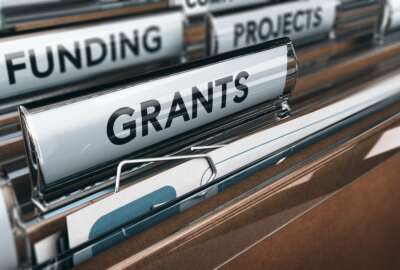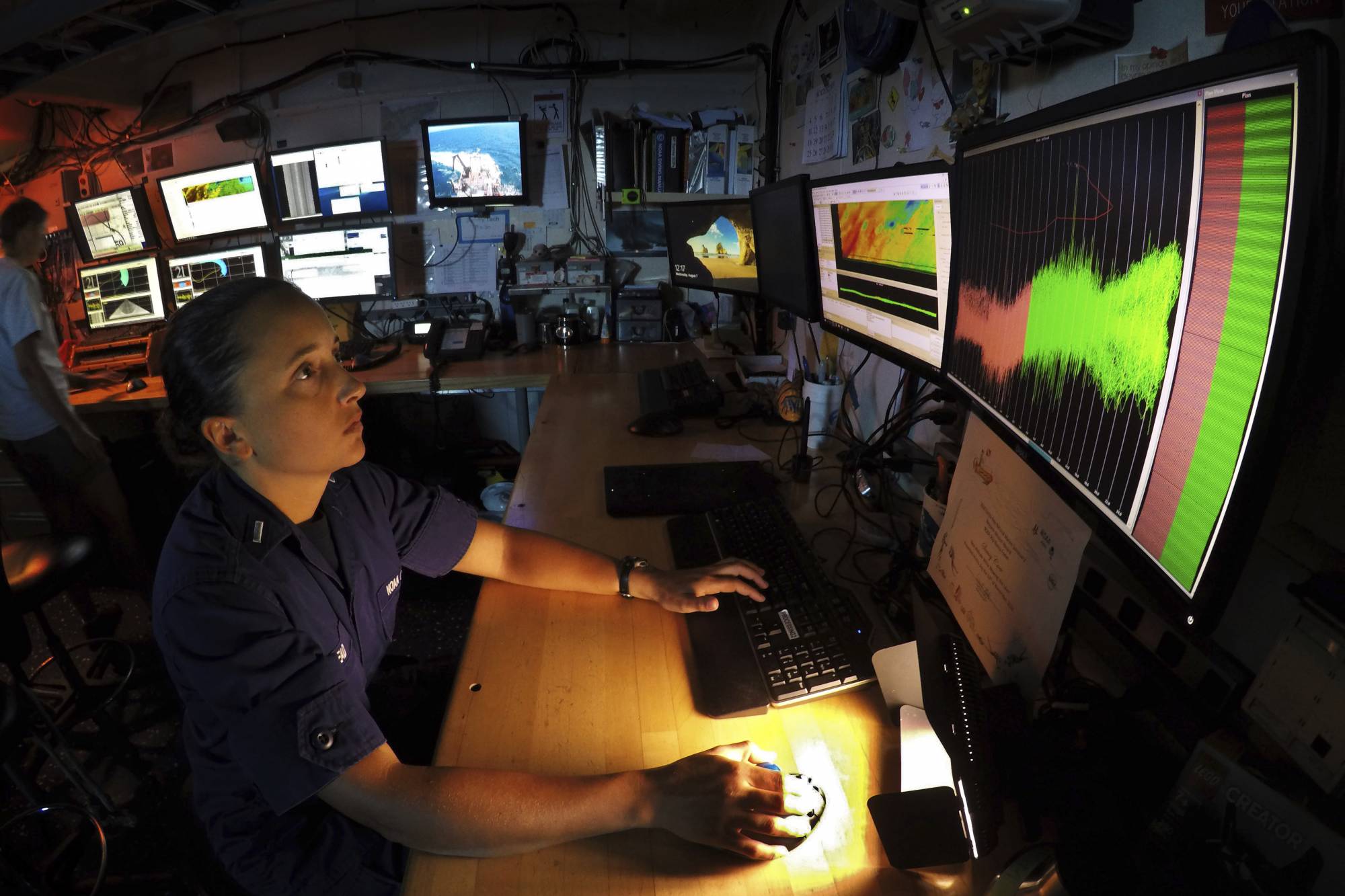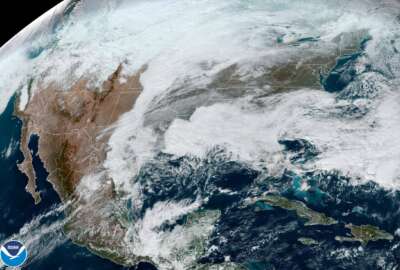A NOAA grant program aims at coastal resiliency
A grant program of the National Oceanic and Atmospheric Administration aims to help the resilience of coastal cities and towns.
A grant program of the National Oceanic and Atmospheric Administration aims to help the resilience of coastal cities and towns. It will hand more than $54 million to four of what it calls accelerators. The accelerators will in turn make grants to small businesses developing technologies for things like renewable energy and hazard mitigation. Braid Theory CEO Ann Carpenter and NOAA program director Carl Gouldman joined the Federal Drive with Tom Temin to discuss.
Interview transcript:
Tom Temin: And Karl, I want to start with you. Tell us about the structure of this program. That is the grants are going to accelerators and they, in turn, do things. But maybe give us the context here of what it is NOAA is trying to accomplish in the big sense.
Carl Goldman: Sure. Thank you, Tom. So I’m in a program within the National Ocean Service called the U.S. Integrated Ocean Observing System Office. And our job is to integrate all ocean coastal Great Lakes data for societal benefit to help lives and livelihoods. And so we deliver ocean information where it needs to go to help people make decisions as our day job. And so this accelerator activity that you’re interviewing us about today is a first of its kind for NOAA effort to boost the business sectors’ ability to develop businesses and provide economic benefits to the nation, but also risk mitigation and resilience for thriving through changing conditions, whether it be marine heat waves or severe storms or harmful algal blooms near our coasts. And so the data and information participants that are delivering ocean data and information, we’ve been working with for decades. And in this case, we’re funding specific work to fund entities that are experts at developing small businesses, finding investment resources for those businesses, helping them identify markets, mentoring them through their development in early stages of their growth. And so we’ve now funded four accelerator entities to do this work at over $13 million each. And those entities are experts at incubator and accelerator-type activities. And we’re really excited. They’re going to be working with cohorts of companies over the next four years to do that mentoring and development work with those companies. And those companies will be building technologies or services that people need to operate or use information from our oceans and coasts.
Tom Temin: All right. And let’s turn to Ann Carpenter of Braid Theory. You’re one of the accelerator companies here. What do you exactly do?
Ann Carpenter: So basically, we help entrepreneurs become better entrepreneurs, right? So startups that we work with are heavy engineering and science-led startups in this broader area called blue economy. And this is all the different types of businesses that are doing the work that Carl mentioned, things like marine, renewable energy, coastal and ocean observation systems, underwater robotics, etc. So these companies are typically heavy. They’re scientists, they’re engineers, they’re deep technical people, but they don’t always have all the business resources and understanding and how to scale that technology into a business and how to commercialize that business and get it out to the market. So organizations like us help them do that better.
Tom Temin: Now, coastal communities have different economies. I mean, some places are boardwalks with pizza parlors and photo booths. There’s fishing communities. Is the underlying idea here, and I guess what can I ask you, Carl, that things are changing in terms of the frequency and intensity of storms and floods and so forth, and that therefore those communities need to be equipped with better information and better mitigation strategies so that they can survive what’s ahead?
Carl Goldman: In a nutshell? Yes. We’ve been working to do a better job of making predictions about the ocean and coastal conditions like you get your weather forecast every day. We’re probably a decade or two behind the weather forecasting community and in the ocean. We’re trying to deliver those types of information. So you might understand changing temperature and salinity. And if you’re a lobster fisherman, what does that mean for where the lobsters are going to maybe be if you’re a whale watching company that takes people out to find whales? This kind of information is really critical to your day job in terms of getting people in and out of port safely to get to have a nice experience trying to see whales. Those are just a couple of specific examples. And so there’s a whole value chain of data and information into the Earth system prediction community that we’re providing these data and information and the companies are finding opportunities to either provide that data and information or technologies to the government for us to purchase and use, but also potentially other private sector companies and provide analytics and predictions for those companies to use. When companies that are going to be deploying our offshore wind, turbines are going to need information about the ocean conditions so that they can understand the operating environment and do that safely.
Tom Temin: We’re speaking with Carl Goldman. He’s director of the Integrated Ocean Observing System Office at NOAA and with Ann Carpenter, CEO of Braid Theory. And Ms. Carpenter. Maybe follow up on that and how this all translates into how things could change for a given community that’s coastal.
Ann Carpenter: So our company, we’re based in Los Angeles and we live and work very close to the Port of Los Angeles. So the communities that Carl described, it’s also all the major maritime and ocean businesses that our economy, that our nation’s economy thrive on. Port of L.A. and Long Beach, where I live, they bring 40% of the goods into this country. And so the ability to better understand the changing ocean conditions, coastal observations, hazard mitigation, understanding just the use of the ocean space. When you start looking at offshore wind aquaculture port operations, it’s more complex than ever. So it’s very strong needs for these kinds of solutions.
Tom Temin: And for those recipients of the grants that would come from the accelerator ultimately originating it, NOAA, how do you define the deliverables? What are the kinds of timelines and how does NOAA maintain oversight and visibility into what the accelerators are doing with the final recipients of the technology developers?
Ann Carpenter: So I can start from our side of things. So basically we’re hitting the ground running. We’ve been working with and, we, it’s not just Braid Theory. We’re a group of seven organizations: Tampa Bay Wave, Seaworthy Collective, Ocean Exchange, World Ocean Council, St. Pete Innovation District and University of South Florida. So collectively, we have all been working in this space for quite some time. So we already have a strong pipeline of startups that are working in this space. So we hope to quickly be getting some of these companies through a very focused accelerator program so that we can start deploying technology development and commercialization awards this year. So it’s a very, very quick timeline. And the types of solutions that they would be looking at are related to the ocean intelligence, to ocean data that helps support the large initiatives like around marine renewable energy. So what’s great about it is because these are software and sensors and platforms and digital twins and edge technology, these things can be deployed much quicker. Pilot projects can be deployed more quickly to support these industries.
Tom Temin: And Carl, how will you make sure you know what’s going on from Washington, D.C., or I should say, Silver Spring level?
Carl Goldman: Right. Well, we’ve got a team of experts that are helping to implement this program that includes some experts we’ve hired from other agencies that have had similar type of programming. We use the grants mechanisms that we have in place, have levers of control and reporting and performance monitoring, of course. These are cooperative agreements, which mean we have significant federal involvement in the project work. So we’re going to have teams of folks working with the accelerators and looking at those technology awards that Ann just mentioned. As they’re being done, we have a check and balance process, if you will, in that. And so we’re really looking forward to also having subject matter experts from our scientific institutions and labs. Have workshops and meetings on some of the areas where we have the greatest need for innovation or new services that are emerging as a need. But we might not have a solution yet. And those are sort of the opportunities for market development that we think are going to be really exciting.
Tom Temin: And just a wild card question here to finish up. And you mentioned you’re in Los Angeles and of course, they’ve experienced these terrible fires over the past period of time. And the source of the fire is not the ocean, but the foothills across the street almost in some cases, literally across the street where the fires have been coming down from there because of the winds from inland. Is there some grand strategy for maybe understanding the interaction of the winds inland and the oceans offshore that could maybe help answer this whole question of how that type of phenomenon can be maybe mitigated or anticipated sooner?
Carl Goldman: In the broad scheme of things. I mentioned Earth Systems predictions, Tom, and that is the coupling of weather, which is a more short-term forecast to the climate, which are longer range of past two weeks and into the months longer range forecasts. And we know that global ocean observing system data and information is really important. We help predict the El Nino and the La Nina cycles in the Pacific Ocean, which help tell us the broader patterns for a given month-to-month and year. And you’ve been hearing about something called atmospheric rivers that are pushing big storms and lots of water from the Pacific onto the West Coast. And so those types of larger weather patterns and the longer the ability to predict them more specifically into the future is something that ocean data and information supports and will make better. And so we’re working on an ongoing basis to do that kind of work. I don’t know really well the specifics in California of the offshore Santa Ana winds that are causing so much trouble right now and their interrelation with atmospheric rivers. I don’t know that scientifically myself, but that’s the type of thing we would want to do is read the experts and scientists from the ocean side to work with the weather forecasters to get data maybe from new platforms and technologies we didn’t used to have in time and space in the ocean. That wasn’t possible before to get it, resolving the questions you just asked.
Tom Temin: And Ann, final comment?
Ann Carpenter: I would just say when you mention things like atmospheric rivers, our coastal communities, the ability to plan and understand and better prepare for changing situations and climate, both short term and long term, is one of the best things that we hope to get out of the kind of work that we’re doing. And it affects every coastal community individually, businesses and the way we move goods around the world, the way we bring our energy, the way we bring our food. And so it’s critical.
Copyright © 2025 Federal News Network. All rights reserved. This website is not intended for users located within the European Economic Area.
Tom Temin is host of the Federal Drive and has been providing insight on federal technology and management issues for more than 30 years.
Follow @tteminWFED






